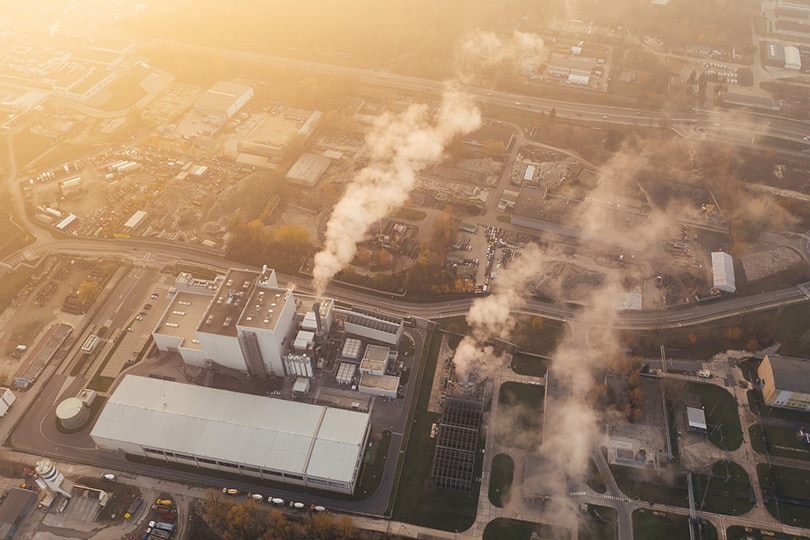What Does Carbon Neutral Mean? Differences, Facts & FAQs
-

- Last updated:

In today’s business world, there is a lot of emphasis on large companies becoming carbon neutral. If you follow the news, you will likely come across this term e as companies attempt to reduce their overall carbon footprints through new measures designed to help the planet. While it sounds good to say carbon neutral, what does that actually mean? If a large company wants to become carbon neutral, how does that translate to day-to-day business?
Carbon neutral means that an individual, business, or corporation generates and removes an equal amount of carbon dioxide from the atmosphere. To achieve this, companies often offset the carbon dioxide they produce by planting trees or buying carbon credits. These methods balance the carbon emissions through natural offsets that remove carbon dioxide from the atmosphere.

What Carbon Neutral Means Practically
If a business releases 100 tons of CO2 into the atmosphere per year and then plants 100 trees at a farm that each takes a single ton of carbon dioxide out of the air per year, the business would have completely offset its carbon emissions. That essentially makes them carbon neutral.
The goal of becoming carbon neutral is to not release any further carbon dioxide into the atmosphere as possible. Since businesses are large drivers of carbon emissions, the goal is to cut down on the output by increasing the amount of carbon scrubbing activities in the world.
Carbon dioxide is considered to be the more prominent greenhouse gas produced by humans, and it is contributing to the effects of climate change. These businesses are hoping that by reducing their CO2 emissions, they will help improve the health of the planet in the long run.

True Carbon Neutral vs. Carbon Credits
Many businesses attain carbon neutral status by purchasing so-called carbon credits. There is a difference between something being naturally carbon neutral versus a company that uses carbon credits. Things that are legitimately carbon neutral naturally balance out their gas emissions without having to use carbon credits as an offset. However, very few things can operate this way. The only things that are truly carbon neutral are plants or people who use no energy or products that rely on any form of fossil fuels. Carbon credits were created to account for this.
A carbon credit is a token that is purchased by businesses that represent a carbon offset. Normally the credits account for one ton of carbon dioxide emissions. The credits are generated by businesses that are naturally carbon neutral. For example, if a large orchard only produces 10 tons of CO2 per year but its trees absorb 100 tons of CO2 per year, the business is carbon negative by 90 tons. The business can then sell those 90 tons as carbon credits to businesses that are producing the same amount. Then, on paper, the business buying the tokens can claim to be carbon neutral.
The problem is, the orchards, farms, and tree belts already exist and simply claiming that they offset your business via these credits is not always 100% genuine.
The best way to truly become carbon neutral is to create new ways to remove carbon dioxide from the atmosphere. Planting new trees or investing in industrial carbon scrubbers can help create more carbon-removing tools rather than tapping into existing ones.

Carbon Neutral vs. Net-Zero Energy
There is a difference between being carbon neutral and achieving net-zero energy. Net-zero energy actually has nothing to do with carbon emissions. A building can become net-zero energy by using solar panels and other smart design techniques, but that has nothing to do with carbon emission. For example, a distribution plant can host 5,000 solar panels on its roof to power the plant independent of any power grid which makes the building net-zero energy. But if the center runs thousands of truckloads of materials per year, it will produce a lot of carbon dioxide.
Ideally, businesses can become both carbon neutral and net-zero energy, but the two things are actually largely unrelated.
Sources Of Carbon Dioxide
Almost every business on Earth produces carbon dioxide. But where does all this carbon come from? It is generated by simple day-to-day activities. Nearly all electricity purchased from local electric grids has carbon emissions. Any businesses that employ trucking, flying, business travel, air conditioning, manufacturing, or even large-scale internet use will produce carbon along the line. Businesses add up their total estimated carbon emissions to create numbers that they are trying to match for the purpose of offsetting their emissions.
Any activity that can be linked to fossil fuels in its lifespan produces carbon. Even businesses that buy products from other dirtier companies are guilty of adding to the carbon emissions. For that reason, becoming carbon neutral is extremely difficult to achieve, especially for large companies.

Can Individual People Become Carbon Neutral?
Technically, regular people can become carbon neutral, but it is a lot harder to achieve because there is a lack of tools. Regular people will have a hard time calculating their average annual carbon dioxide emissions because they don’t have a team calculating it for them. It is possible to add up the number of miles driven, calculate your car’s CO2 output per mile, add up the number of kilowatts of power used at home and the source of that power and come up with a figure but it is strenuous. People also generally don’t have access to the carbon credit market to buy their own carbon credits. So while it is possible for people to be carbon neutral, it is nearly impossible to track the numbers.

Conclusion
Next time you hear the term carbon neutral, you’ll know that it means trying to completely offset your carbon emissions through a variety of means. The goal is to reduce carbon emissions to zero in order to stop the amount of CO2 in the atmosphere from increasing any further. Many companies are attempting to become carbon neutral in the next couple of decades and hopefully, they can achieve their goals.
Featured Image Credit: jplenio, Pixabay
Contents
